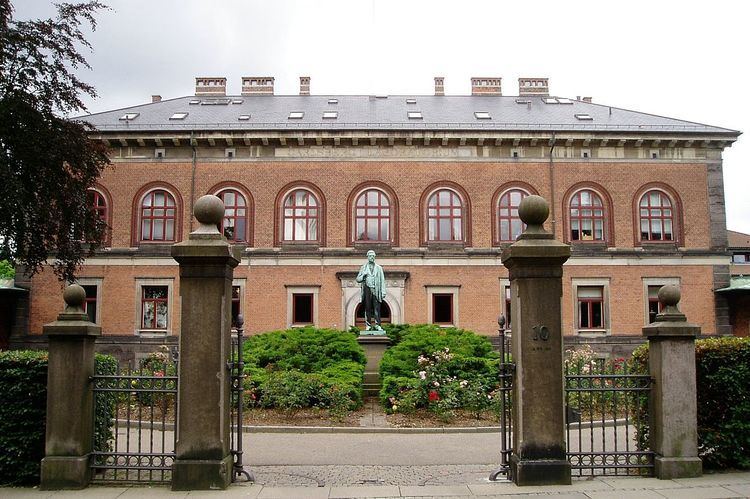 | ||
The Carlsberg Laboratory in Copenhagen, Denmark, was created in 1875 by J. C. Jacobsen, the founder of the Carlsberg brewery, for the sake of advancing biochemical knowledge, especially relating to brewing. It featured a Department of Chemistry and a Department of Physiology. In 1972, the laboratory was renamed the Carlsberg Research Center and was transferred to the brewery.
Overview
The Carlsberg Laboratory was known for protein science and had a series of well-known directors, including Johan Kjeldahl, S. P. L. Sørensen, and Kaj Ulrik Linderstrøm-Lang.
The Carlsberg Laboratory was also known for isolating Saccharomyces carlsbergensis, the species of yeast responsible for lager fermentation, as well as for introducing the concept of pH in acid-basechemistry. The Danish chemist Søren Peder Lauritz Sørensen introduced the concept of pH, a scale for measuring acidity and basicity of substances. While working at the Carlsberg Laboratory, he studied the effect of ion concentration on proteins, and understood the concentration of hydrogen ions was particularly important. To express the hydronium ion (H3O+) concentration in a solution, he devised a logarithmic scale known as the pH scale.
Research from the Carlsberg Laboratory was published in its journal, Comptes rendus des travaux du laboratoire Carlsberg, which is often abbreviated to Compt. rend. trav. lab. Carlsberg or simply C. R. Trav. Lab. Carlsberg.
